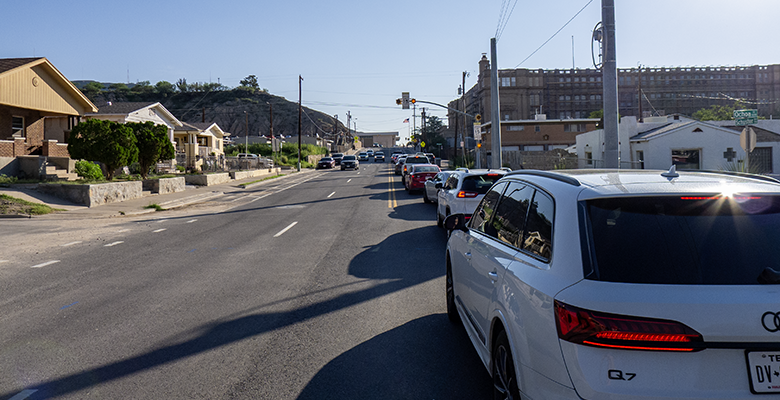I live in a neighborhood I call Barrio Heights. Barrio Heights is below Rim Road, close to El Paso High. The houses in Barrio Heights are old. Our house allegedly dates to 1925, and it’s not the oldest house in the neighborhood. There’s a house five blocks from me that was built in 1892.
I’ve lived in my house for more than 30 years, and the neighborhood has changed in that time. The neighbors have changed. Mostly they’re the same neighbors, but they’re older. The kids who used to play in the street have grown up and moved out. A few new families have moved into the houses that were vacated when their owners died. It takes someone dying to open a vacant house in this neighborhood. That’s why the schools are underpopulated, because most of the neighbors are too old to have school age kids.
That’s the case for most of the established neighborhoods in El Paso. The neighborhoods are established, because the neighbors are established. The houses are paid for, and the homeowners are retired, and their next move will be to a cemetery.
Back in 2012, Plan El Paso contemplated making the city the “least car-dependent city in the Southwest”. That’s a pretty ambitious goal for a city that stretches for 40 miles from city limit to city limit on I-10. And that’s a heavy load to put on our retirement age citizens.
(Remember, 2012 was the year that the City’s population growth started flat-lining.)
Back towards the end of 2024, the city resurfaced Schuster from Mesa to Brown. And they eliminated a car lane to accommodate two bike lanes, one on each side.
I love bike lanes. I ride. But that bike lane from Brown to Stanton rarely gets used. Jesse and Naomi use it almost every day when classes are in session at UTEP, and V might use it to go to church, but most of the time, no one uses it.
And, with just one lane on Schuster going east, it’s a major inconvenience for parents from distant neighborhoods dropping their kids off at El Paso High. Sometimes the snarl of traffic backs up to Kansas, the street not the state.
The goals for Plan El Paso are admirable. If El Paso were new, walkable, rideable, neighborhoods would be a great design parameter. But Barrio Heights isn’t new. Retrofitting an existing neighborhood to meet a utopian ideal punishes the residents who moved here thirty or forty of fifty years ago.
The decisions of the City of El Paso demonstrate a recurring theme: To create economic development, the City tries to attract new residents. So the City pursues mega-projects that line the pockets of the contractors and benefits the people who make donations to the political class.
And the City neglects the needs of the people that already live here.
Like maintaining the streets.
The City repaved Schuster, but, even with their best intentions, the City messed that up.
If the City has to have to have bike lanes, the City should restore the second eastbound lane, and take away a westbound lane. There’s not a lot of traffic heading west on Schuster, because there’s not a lot happening on that side of the street. Just doctors’ offices, mostly, and that cute little cluster of a dozen or 20 houses right below Rim Road. They don’t get nearly the traffic that El Paso High gets.


And if the city doesn’t heed your excellent suggestion, at least take the left turn only lane out of westbound Schuster at Stanton. Some mornings, after those EPHS parents drop off their kids, they turn around to go west on Schuster and if they want to go straight, or turn right at Stanton, they will be waiting in yet another long line! And meanwhile, the left lane, westbound is empty… why, you may ask? Because NO ONE turns left on Stanton at Schuster. If the city planners would spend 5 minutes at the street corner they would instantly know why!! Because, if you are travelling west on Schuster and you want to turn left, that means you want to head downtown, right? And everyone heading downtown knows that Kansas, the one way street, south bound (not the beautiful state that I grew up in) is the best way to go downtown.
No self respecting El Paso would ever turn left on Stanton! Get rid of the left turn only lane.
Worse, when they do deem to repave a street anywhere in town, it’s like the contractors who do this kind of work have forgotten how (or, they never knew) to properly pave a street. Even those few street with newly repaved surfaces are far from smooth. My car rides as if I’m on a bumpy road, because the surfaces are so uneven! When they last re-did parts of Montwood, cracks developed within days of the actual work! That was followed by potholes, and now we got patches, just like every other sorry street I drive on. Our streets are in terrible condition, all over town (well, maybe the West side is good, but I seldom go over there), and it is laughable to see street crews out there painting the white lines and marking crosswalks right over the patches and cracks and hole. More waste.